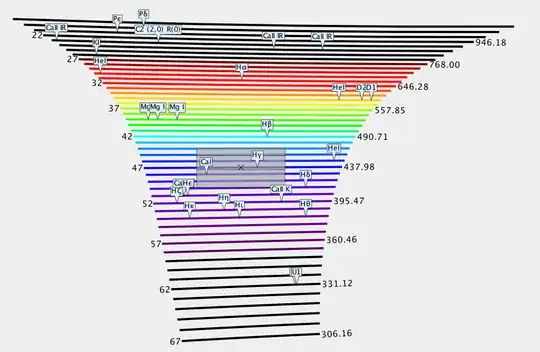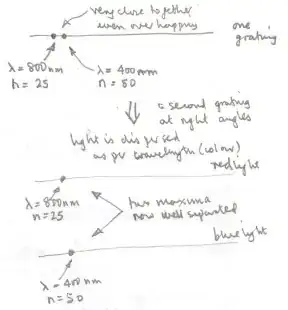An echelle spectrometer has one low groove density grating (echelle) and one high groove density grating. https://en.wikipedia.org/wiki/Echelle_grating
After the echelle grating there will be many orders and not well dispersed spectrum. After the second grating the spectrum will be dispersed above each order.
The spectrogram bellow does not follow this description. On the spectrogram, In vertical directions are the different orders from the low groove density echelle grating. In horizontal is the dispersion from the high groove density grating.
What I would like to ask is how are the wavelengths arranged. It looks as on the 52 order there are many dispersed wavelengths of let say blue color(400nm, 398nm, 397nm..380nm). And the 53 order have completely different spectral content (379nm, 378nm,..360nm) but no 400nm or 380nm.

